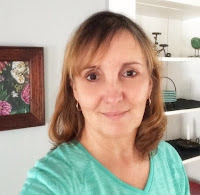No matter what method you choose in the publishing world, I encourage you to create a book proposal. Whether it is fiction or nonfiction, you need to create this document because it is your business plan for your book. Years ago, as a frustrated acquisitions editor, I wrote Book Proposals That $ell, 21 Secrets to Speed Your Success. This book has over 150 Five Star reviews and many people have used it to get published. I also have a free book proposal checklist at: www.terrylinks.com./bookcheck and a free teleseminar about proposals at: www.askaboutproposals.com.
I’ve read thousands of book proposals as an acquisitions editor and a former literary agent. I continually teach on the topic because I believe many writers don’t understand the critical nature of this specialized document called a book proposal.
On the traditional side of publishing, editors and agents read proposals. It doesn’t matter whether you’ve written nonfiction or fiction because this document includes information which never appears in your manuscript yet is critical in the decision-making process.
Many authors have not written a book proposal because have written a full manuscript. From my perspective of working in book publishing for over 20 years, every author should create a book proposal for their book—whether eventually they publish the book with a company where they pay to get it published (subsidy or self-publishing) or whether they find a traditional book publisher. In the proposal creation process, the author learns critical elements about their book concept plus they are better positioned in the marketplace.
Here are four of the many benefits of proposal creation:
1. You Define Your Target Market. Many authors believe their book will hit a broad target—everyone. No successful book is for everyone. Each book has a primary target audience, and the proposal creation process helps you define, pinpoint and write about this audience. It is important in nonfiction but it is also important in fiction. For example, romance is the largest fiction genre yet there are many divisions within the romance genre. The proposal helps to define this division and helps the publisher understand who will be creating the sales.
Every proposal needs a target which is defined—yet large enough to generate volume sales. You learn and achieve this balance when you create a page-turning book proposal.
2. You Understand Your Competition. Book proposals force writers to take a hard look at what is already on the market, and what if anything they bring to the conversation. Many new authors believe they are writing something unique with no competition. It’s not true. Every book competes in the marketplace, and you will be a better equipped author if you understand your competition.
3. You Create A Personal Plan For Marketing. As you create a book proposal, you will include practical, specific and measurable ideas that can executed when your book enters the market. The proposal will be a valuable reference tool for you because you’ve done this important evaluation process.
4. You Possess A Valuable Tool To Pitch Agents and Editors at Traditional Houses. Literary agents and editors do not read manuscripts. They read book proposals. Even novelists need a book proposal for their initial pitch to an editor or agent. And if you self-publish and are successful with selling your book, because you own everything, if you receive an attractive offer from a traditional house, then you can move the book. Without a proposal you can’t properly pitch the concept and you’ve eliminated this possibility.
Throughout my years in publishing, I have made multiple trips to New York City and met with some of the top literary agents and editors. Almost each time, I am asked, “Where is the next Prayer of Jabez or Purpose Driven Life or Left Behind or ______ (name the bestselling book)?” Each of these books sold millions of copies. The Left Behind books continue to sell over 100,000 copies a year—and they were originally published over 20 years ago. These professionals are actively looking every day for the next bestseller. Yes, they may be telling you their agency is full and they have no room on their list for your book—but the reality is something different.
I encourage you to keep looking for the right fit for your manuscript. It’s part of the editorial search that every writer undergoes to discover the right place for their book to be published.
Tweetable:







